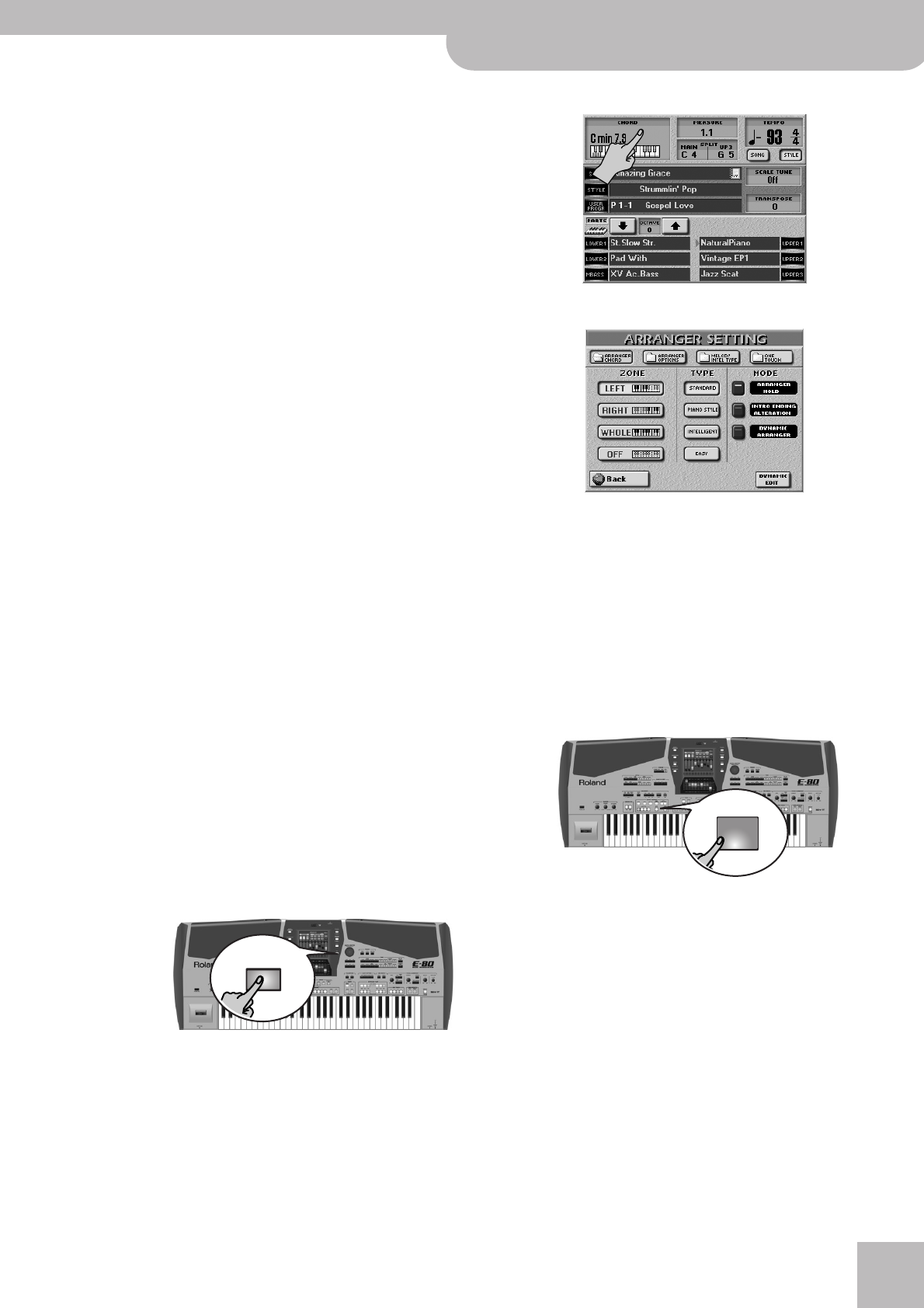
Using the Harmonic Bars
E-80 Music Workstation
r
35
case the volume of the “real” organ sound is raised to
its normal level. Press the switch icon to select your
preferred setting.
ROTARY SOUND: This section contains an on/off
switch for activating or switching off the Rotary
effect. This effect simulates the typical sound modu-
lation generated by a cabinet with rotating loud-
speakers. You can also push the BENDER/MODULA-
TION lever towards the rear of the E-80 to change
between the SLOW and FAST speeds of the Rotary
effect. (Or press the lever icon to alternate between
the SLOW and FAST rotation speeds.)
Note: The on/off function and alternation between the slow
and fast rotation speeds can be assigned to an ASSIGN SW
button (see p. 71) and/or to a footswitch (see p. 75).
VIBRATO/CHORUS: The vibrato effect cyclically mod-
ulates the pitch of organ sounds (which is not the
same as the Rotary effect). The chorus effect mixes
the normal sound of the organ with a sound to which
vibrato has been applied, adding richness and spa-
ciousness to the sound.
Press the [ON÷OFF] field to switch this effect on or
off. To select another effect, press the display icon
and rotate the [DATA÷ENTRY] dial (or use the [DEC]/
[INC] buttons). The possibilities are:
● V-1, V-2, V-3—This applies vibrato (pitch modulation).
Increasing the value will produce a deeper effect.
● C-1, C-2, C-3—This applies chorus to add depth and
spaciousness to the sound. Increasing the value will pro-
duce a deeper effect.
(2) Press the [HARMONIC¥BAR] field to return to “HAR-
MONIC BARS” page.
■Using a “beat box” with the organ
The only thing that may be missing now is a drum
accompaniment. Whenever you press the EASY SETTING
[ORGAN] button, the E-80’s chord recognition is auto-
matically switched on, so that the Arranger plays entire
accompaniments (including melodic parts). If you only
need a drum accompaniment, here is how to proceed:
(1) Return to the main page by pressing the [EXIT] but-
ton.
(2) Press the chord field.
The display now changes to:
If your E-80 displays a different page, press the
[ARRANGER¥CHORD] field.
(3) Press the [OFF] field in the left column (it turns
blue).
(4) Switch off the [ARRANGER¥HOLD] button icon.
This means that the Arranger no longer “listens” to
the chords you play. All melodic parts of the accom-
paniment are muted. The drums, however, are still
available.
(5) Press the [START÷STOP] button to start Arranger
playback.
Play along using the organ sounds you selected (and
perhaps modified).
See page 27 for how to select another Music Style.
If the accompaniment is too fast (or too slow), here is
how to change the Music Style tempo:
(6) Press [ôSLOW] to decrease the tempo in steps of
one unit. Press [FAST¥®] to increase the tempo in
steps of one unit.
You can also press the [TAP] button several times in
the rhythm of the desired tempo.
(7) To quickly return to the default tempo, hold down
[√¥SLOW] and simultaneously press [FAST¥®].
(8) If necessary, use the VARIATION [1]~[4] buttons to
vary the drum accompaniment.
(9) Press [START÷STOP] again to stop your “beat box”.
EXIT
START
STOP


















